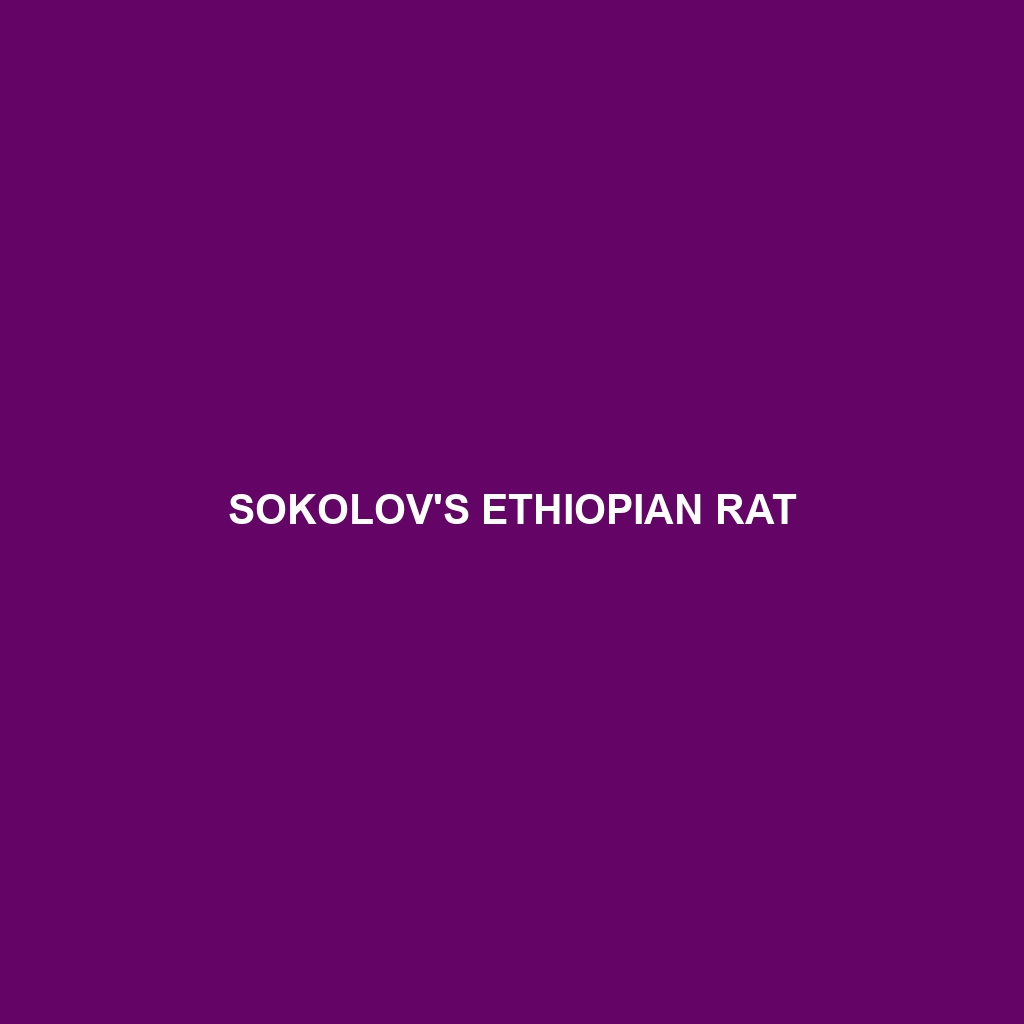Common Name: Sokolov’s Ethiopian Rat
Scientific Name:
Habitat:
Sokolov’s Ethiopian Rat is primarily found in the highland regions of Ethiopia, particularly in remote areas characterized by dense grasslands and shrublands. These habitats are located at elevations between 2,000 and 3,000 meters, where the climate is cool and moist, favoring the survival of this unique rodent species.
Physical Characteristics:
This medium-sized rat typically measures between 20 to 30 cm in length, excluding the tail. Sokolov’s Ethiopian Rat features soft, dense fur that is predominantly sandy-brown with a lighter underbelly. Notable distinctive features include its large, round ears and long whiskers that aid in navigation through its environment. The rat’s elongated body and slightly flattened head further contribute to its unique appearance.
Behavior:
Sokolov’s Ethiopian Rat is primarily nocturnal, exhibiting increased activity during the night. They are known for their burrowing behaviors, creating complex tunnel systems in the grasslands. Socially, these rats can be solitary or live in small family groups, employing vocalizations and scent markings to communicate with one another. Their alert nature and ability to evade predators add to their intriguing behavior.
Diet:
This rodent primarily feeds on a vegetarian diet, including grasses, seeds, and roots. Sokolov’s Ethiopian Rat has adapted to its environment by developing excellent foraging skills, allowing it to locate nutritious food sources within its habitat. These feeding habits play a critical role in seed dispersal, contributing to the ecological balance of the region.
Reproduction:
Sokolov’s Ethiopian Rat typically breeds during the rainy season, which provides ample food resources for the offspring. Females give birth to litters averaging four to six young after a gestation period of approximately 28 days. The young rats are weaned after about three weeks and begin to explore their surroundings shortly thereafter, showcasing rapid development and independence.
Conservation Status:
Currently classified as vulnerable, Sokolov’s Ethiopian Rat faces threats from habitat loss due to agriculture expansion and climate change. Conservation efforts are necessary to monitor their populations and implement protective measures to conserve their natural habitats.
Interesting Facts:
One fascinating fact about Sokolov’s Ethiopian Rat is that it has been observed using its whiskers to navigate through the dense underbrush during nighttime foraging. Additionally, its unique ability to adapt to high-altitude environments makes it a subject of interest among biologists studying rodent adaptations.
Role in Ecosystem:
Sokolov’s Ethiopian Rat plays a significant role in its ecosystem by contributing to soil aeration through its burrowing activities and seed dispersal, which aids in plant propagation. As a prey species, it also serves as a food source for various predators, maintaining the balance within its food web. Its presence is indicative of a healthy, functioning ecosystem in the highlands of Ethiopia.
